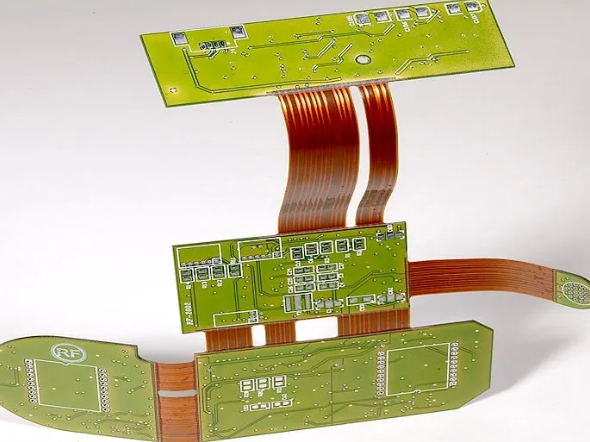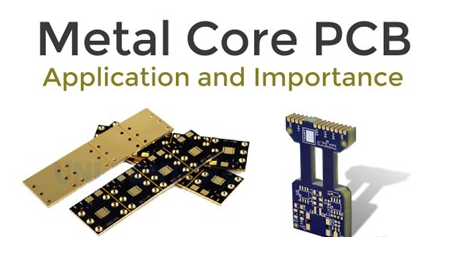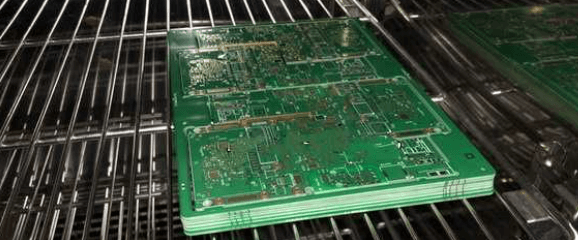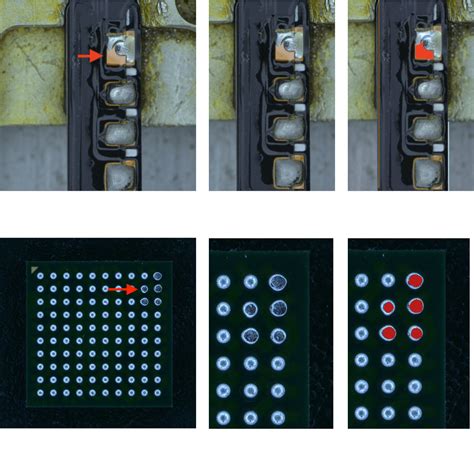Rigid flex board
Advantages Of Using Rigid Flex Boards In Modern Electronics
Rigid flex boards, a hybrid of rigid and flexible circuit boards, have become increasingly popular in modern electronics due to their numerous advantages. These boards combine the best features of both rigid and flexible circuits, offering a versatile solution for a wide range of applications.
One of the primary benefits of rigid flex boards is their ability to save space and reduce weight.
By integrating flexible circuits with rigid boards, designers can create more compact and lightweight devices, which is particularly important in industries such as aerospace, medical devices, and consumer electronics where space and weight are critical factors.
In addition to space and weight savings, rigid flex boards also offer enhanced reliability and durability.
The flexible sections of these boards can withstand bending and flexing without breaking, making them ideal for applications that require frequent movement or mechanical stress. This flexibility reduces the risk of solder joint failures and other mechanical issues that can occur with traditional rigid boards. Furthermore, the seamless integration of rigid and flexible sections eliminates the need for connectors and cables, which are common points of failure in electronic devices. This results in a more robust and reliable product with fewer potential failure points.
Another significant advantage of rigid flex boards is their ability to improve signal integrity and performance.
The close proximity of the rigid and flexible sections allows for shorter signal paths, which can reduce signal loss and improve overall performance. This is particularly important in high-speed and high-frequency applications where signal integrity is crucial. Additionally, the elimination of connectors and cables can reduce electromagnetic interference (EMI) and crosstalk, further enhancing the performance of the device.
The design flexibility offered by rigid flex boards is another key benefit.
These boards can be designed to fit into complex and irregular shapes, allowing for greater creativity and innovation in product design. This flexibility enables designers to create more ergonomic and user-friendly devices, which can be a significant competitive advantage in the market. Moreover, the ability to integrate multiple functions into a single board can simplify the overall design and reduce the number of components required, leading to cost savings in both manufacturing and assembly.
Manufacturing efficiency is another area where rigid flex boards excel.
The integration of rigid and flexible sections into a single board can streamline the manufacturing process, reducing the number of steps and components required. This can lead to shorter production times and lower costs, making rigid flex boards an attractive option for manufacturers. Additionally, the reduced need for connectors and cables can simplify assembly and reduce the risk of errors, further enhancing manufacturing efficiency.
Finally, the environmental benefits of rigid flex boards should not be overlooked.
The reduction in the number of components and materials required can lead to less waste and a smaller environmental footprint. Furthermore, the increased reliability and durability of these boards can result in longer product lifespans, reducing the need for frequent replacements and contributing to a more sustainable approach to electronics design.
In conclusion, the advantages of using rigid flex boards in modern electronics are numerous and significant. From space and weight savings to enhanced reliability, improved performance, design flexibility, manufacturing efficiency, and environmental benefits, these boards offer a versatile and effective solution for a wide range of applications. As technology continues to advance and the demand for more compact, reliable, and high-performance devices grows, the adoption of rigid flex boards is likely to increase, further solidifying their importance in the electronics industry.

Design Tips For Creating Efficient Rigid Flex Boards
Designing efficient rigid flex boards requires a meticulous approach, combining the best practices of both rigid and flexible circuit board design. The unique nature of rigid flex boards, which integrate flexible and rigid substrates into a single unit, offers numerous advantages, including enhanced reliability, reduced weight, and improved space utilization. However, to fully leverage these benefits, designers must adhere to specific guidelines and considerations.
To begin with, understanding the application and environment in which the rigid flex board will operate is crucial.
This foundational knowledge informs decisions regarding material selection, layer stack-up, and overall design architecture. For instance, in high-vibration environments, the flexibility of the board must be optimized to prevent mechanical stress and potential failure. Consequently, selecting materials with appropriate flexural properties and ensuring adequate bend radii can significantly enhance the board’s durability.
Transitioning from material selection to layout design, it is essential to maintain a balance between the rigid and flexible sections.
The transition zones, where the rigid and flexible parts meet, are particularly susceptible to stress. Therefore, designers should avoid placing vias, pads, or other critical components in these areas. Instead, these elements should be positioned in the more stable rigid sections to ensure structural integrity and reliable electrical connections.
Moreover, trace routing on rigid flex boards demands careful consideration.
In the flexible sections, traces should be routed in a manner that minimizes stress during bending. This often involves using curved traces rather than sharp angles, which can act as stress concentrators and lead to trace cracking. Additionally, maintaining consistent trace widths and spacing helps to ensure uniform electrical performance and reduces the risk of signal integrity issues.
Another important aspect is the layer stack-up configuration.
The number of layers and their arrangement can significantly impact the board’s performance and manufacturability. For instance, placing ground and power planes adjacent to signal layers can help to minimize electromagnetic interference (EMI) and improve signal integrity. Furthermore, designers should consider the thermal management requirements of the board, as excessive heat can degrade the performance of both rigid and flexible sections. Incorporating thermal vias and heat sinks in the design can aid in effective heat dissipation.
Transitioning to the manufacturing process, collaboration with the fabrication house is indispensable.
Early and continuous communication with the manufacturer can help to identify potential design issues and ensure that the board can be produced efficiently and cost-effectively. For example, understanding the manufacturer’s capabilities and limitations regarding minimum trace widths, spacing, and bend radii can inform design decisions and prevent costly redesigns.
In addition to these technical considerations, adhering to industry standards and guidelines is paramount.
Standards such as IPC-2223 provide comprehensive guidelines for the design of flexible and rigid flex printed boards. Compliance with these standards not only ensures the reliability and performance of the board but also facilitates smoother transitions from design to production.
Finally, thorough testing and validation are essential to confirm that the rigid flex board meets all design specifications and performance requirements. This includes electrical testing to verify signal integrity, mechanical testing to assess durability under bending and flexing conditions, and environmental testing to ensure reliability in the intended operating environment.
In conclusion, designing efficient rigid flex boards involves a holistic approach that encompasses material selection, layout design, layer stack-up configuration, manufacturing collaboration, adherence to industry standards, and rigorous testing. By meticulously addressing each of these aspects, designers can create robust and reliable rigid flex boards that meet the demands of modern electronic applications.

Common Applications Of Rigid Flex Boards In Various Industries
Rigid flex boards, a hybrid of flexible and rigid circuit boards, have become increasingly prevalent across various industries due to their unique combination of flexibility, durability, and space-saving capabilities. These boards are designed to meet the demands of complex electronic systems, offering a versatile solution that can be adapted to a wide range of applications. As technology continues to advance, the utilization of rigid flex boards is expanding, driven by their ability to enhance performance and reliability in numerous sectors.
One of the primary industries benefiting from rigid flex boards is the aerospace sector.
In this field, the need for lightweight, compact, and highly reliable components is paramount. Rigid flex boards meet these requirements by providing a robust yet flexible solution that can withstand the harsh conditions of aerospace environments. They are commonly used in avionics systems, where their ability to reduce weight and space while maintaining high performance is crucial. Additionally, the boards’ resistance to vibration and mechanical stress makes them ideal for use in satellites and other space-bound equipment.
The medical industry also leverages the advantages of rigid flex boards, particularly in the development of advanced medical devices.
These boards are integral to the design of compact, portable, and reliable medical equipment, such as pacemakers, hearing aids, and diagnostic imaging devices. The flexibility of the boards allows for innovative designs that can conform to the human body, enhancing patient comfort and device functionality. Moreover, the reliability and durability of rigid flex boards ensure that medical devices can operate effectively over extended periods, which is essential for patient safety and treatment efficacy.
In the realm of consumer electronics, rigid flex boards are instrumental in the production of modern gadgets that demand high performance in a compact form factor.
Smartphones, tablets, and wearable devices often incorporate these boards to achieve sleek designs without compromising on functionality. The ability to fold and bend the boards allows manufacturers to create more ergonomic and user-friendly products. Furthermore, the integration of rigid and flexible sections within a single board reduces the need for multiple connectors and interconnections, thereby enhancing the overall reliability and longevity of the devices.
The automotive industry is another sector where rigid flex boards are making significant inroads.
As vehicles become increasingly sophisticated with the integration of advanced electronic systems, the need for reliable and space-efficient circuit solutions has grown. Rigid flex boards are used in various automotive applications, including infotainment systems, advanced driver-assistance systems (ADAS), and engine control units. Their ability to withstand extreme temperatures and mechanical stress makes them well-suited for the demanding conditions within vehicles. Additionally, the boards’ compact design helps in reducing the overall weight of the vehicle, contributing to improved fuel efficiency and performance.
In the industrial sector, rigid flex boards are employed in the development of complex machinery and equipment.
Industrial automation systems, robotics, and control systems benefit from the boards’ ability to provide reliable performance in harsh environments. The flexibility of the boards allows for innovative designs that can fit into tight spaces, while their durability ensures long-term operation even under strenuous conditions. This makes rigid flex boards an essential component in the advancement of industrial technology.
In conclusion, the versatility and reliability of rigid flex boards have made them a critical component across various industries. From aerospace and medical devices to consumer electronics, automotive applications, and industrial machinery, these boards offer a unique solution that meets the demands of modern technology. As industries continue to evolve, the adoption of rigid flex boards is likely to increase, driven by their ability to enhance performance, reduce space, and improve the overall reliability of electronic systems.
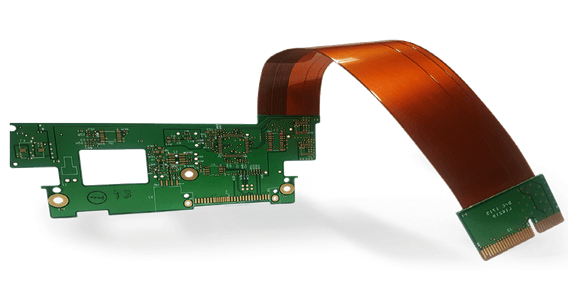
Challenges And Solutions In Manufacturing Rigid Flex Boards
Manufacturing rigid flex boards presents a unique set of challenges that require innovative solutions to ensure high-quality, reliable products. These boards, which combine the benefits of both rigid and flexible circuits, are increasingly used in advanced electronics due to their versatility and space-saving capabilities. However, the complexity of their design and production processes introduces several obstacles that manufacturers must overcome.
One of the primary challenges in manufacturing rigid flex boards is ensuring the precise alignment of the rigid and flexible layers.
Misalignment can lead to electrical failures and mechanical stress, compromising the board’s functionality. To address this issue, manufacturers employ advanced alignment techniques and equipment. Automated optical inspection (AOI) systems are often used to verify the alignment during the production process, ensuring that each layer is correctly positioned before proceeding to the next stage.
Another significant challenge is managing the different thermal expansion rates of the materials used in rigid flex boards.
The rigid sections are typically made from materials like FR4, while the flexible sections use polyimide. These materials expand and contract at different rates when exposed to temperature changes, which can cause delamination or warping. To mitigate this, manufacturers carefully select materials with compatible thermal properties and use specialized adhesives that can accommodate the differential expansion. Additionally, thermal cycling tests are conducted to ensure the board can withstand the temperature variations it will encounter in its intended application.
The intricate design of rigid flex boards also poses challenges in terms of signal integrity and impedance control.
The transition between rigid and flexible sections can introduce discontinuities that affect signal transmission, leading to potential data loss or interference. To overcome this, designers use advanced simulation software to model the electrical behavior of the board and optimize the layout for minimal signal disruption. Controlled impedance techniques, such as maintaining consistent trace widths and spacing, are also employed to ensure reliable signal transmission across the entire board.
Manufacturing rigid flex boards also involves complex lamination processes, which can be difficult to control.
The lamination process must ensure that the flexible layers are securely bonded to the rigid sections without causing damage or introducing defects. This requires precise control of temperature, pressure, and time during the lamination cycle. Manufacturers often use multi-stage lamination processes, where the flexible layers are laminated separately before being integrated with the rigid sections. This approach helps to minimize the risk of defects and ensures a more reliable final product.
Quality control is another critical aspect of manufacturing rigid flex boards.
Given the complexity of these boards, thorough testing is essential to identify and address any potential issues before the boards are shipped to customers. Manufacturers use a combination of electrical testing, such as continuity and isolation tests, and mechanical testing, such as bend and flex tests, to verify the performance and durability of the boards. Advanced inspection techniques, including X-ray and ultrasonic testing, are also employed to detect hidden defects that may not be visible through conventional methods.
In conclusion, while the manufacturing of rigid flex boards presents several challenges, innovative solutions and advanced technologies enable manufacturers to produce high-quality, reliable products. By addressing issues related to alignment, thermal expansion, signal integrity, lamination, and quality control, manufacturers can ensure that rigid flex boards meet the stringent requirements of modern electronic applications. As technology continues to evolve, ongoing research and development will further enhance the manufacturing processes, leading to even more sophisticated and reliable rigid flex boards in the future.

